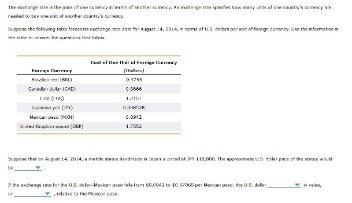
The risk/reward proposition (how much you’re likely to win on a winning day versus how much you could lose on a losing day) is also decidedly negative. Over the last 20 years, the average winning day was just +1.85% against the average losing day of -3.28%, making the Santa Claus proposition even less attractive. To see if there is any validity to the proposition of a regularly occurring Santa Claus effect, we looked back at the last 20 years of performance of the Standard & Poor’s 500 (S&P 500) in the week leading up to Dec. 25. Based on our review of the data, we can state that there is minimal evidence of any discernible Santa Claus rally. The average return over the time period was +0.385%, or effectively flat. The official period for the Santa Claus rally includes the last 5 trading days of the year and the first two of the following year.
What a Santa Claus Rally Could Mean for Your Investments This Year – Yahoo Finance
What a Santa Claus Rally Could Mean for Your Investments This Year.
Posted: Mon, 12 Dec 2022 08:00:00 GMT [source]
It’s also an effect that appears to have persisted, despite widespread research on the topic. “I believe January will test the market, as earnings dominate and the Fed meets (to determine interest https://currency-trading.org/education/best-binary-options-strategy-compounding-beginner/ rates) Jan 31-Feb 1,” said Howard Silverblatt, senior index analyst at S&P Dow Jones Indices. “If earnings don’t pan out, we could quickly test the 3550 level” in the S&P 500 index.
The history of the Santa Claus rally
How and when these funds flow into the market partially determines the seasonal effects of each specific index. The Almanac Investor refers to the Santa Claus Rally as the last five trading days https://forex-world.net/software-development/the-difference-between-data-information-and/ of December and first two trading days of January. The Santa Rally–like the January Barometer–is considered more of an “Early Warning System” for the coming year than a speculative trade.

A better strategy is to maintain a long-term investment outlook and not be tempted by the promise of Santa Claus rallies or the January Effect. While December has, historically, been one of the more bullish months for stocks, this year shows how even the seemingly strongest seasonal tendencies aren’t a given. With the S&P 500 (SPX) down more than 6% for the month as of Monday, the market was facing an uphill battle to close out 2022 on an up note.
Bears May Come To Broad and Wall”
Over the last 20 years of following the Santa Claus rally proposition, the average return was only +0.385%, which we do not consider a viable trade opportunity for any but the most nimble of traders. There is, in fact, some evidence of above-average bullishness in the four (trading) days before Christmas and the four after it. Other factors include holiday and year-end bonuses and the expectation that a rally will take place in late December — because that’s usually the case. Although data has shown that the Santa Claus rally period has generated more positive returns than negative returns, there is no way for traders/investors to predict whether it will happen again.

You should consult your own tax, legal and accounting advisors before engaging in any financial transaction. Products, accounts and services are offered through different service models (for example, self-directed, full-service). Based on the service model, the same or similar products, accounts and services may vary in their price or fees charged to a client.
Santa Claus Rallies In Bear Markets
„Chase Private Client“ is the brand name for a banking and investment product and service offering, requiring a Chase Private Client Checking℠ account. Get relevant tips and viewpoints to help you make smart investment decisions, powered by the expertise of J.P. Work with a team of fiduciary advisors who will create a personalized financial plan, match you to expert-built portfolios and provide ongoing advice via video or phone. A J.P. Morgan Private Client Advisor works with you to understand your goals, to create a customized strategy and help you plan for your family’s tomorrow, today. Whether you choose to work with an advisor and develop a financial strategy or invest online, J.P.
- Traders should be wary of market talk surrounding the notion of a Santa Claus rally, and stay fixed on the current market environment.
- The SPX gained 3.4% during the eight-day window, the fourth days before and after Christmas were both negative, the last three days before Christmas and the first day after it were positive, and the final day of the year was negative.
- However, it’s not a sure thing; your chance of an up day for markets during this period is still only a little better than six out of 10 based on history.
- Their theory is simply that if one of the best and most consistent stock market trends fails; watch out for the rest of the year.
- This could be because lighter trading volumes during these periods make it easier for bullish investors to move the market.
- Shares are already up 118% this year, so it’ll be interesting to see if more gains are in the offing.
Although there’s no clear expectation for the Santa Claus rally, history has shown that stocks often outperform during the end-of-the-year period. In 2018, the S&P 500 finished the month with a 6.6% gain after December 24, which were the last four trading days of the month. Although the index fell on Jan. 3 — the second day of the new year — December 24 proved to be the market bottom. Yale Hirsch first documented the pattern in 1972, writing in „Stock Trader’s Almanac“ that the S&P 500 had gained an average 1.5% during that seven-day period from 1950 through 1971. The pattern has held true since 1950, with the broad market index increasing an average of 1.3%. Additionally, the market has gained during those days in 34 of the previous 45 years, or more than 75% of the time.
What It Means for Individual Investors
In the last 71 years, the S&P 500 index has risen annually by 1.3% over those seven days (on average), based on research from Michael Batnick, managing partner at Ritholtz Wealth Management, via CNBC. This would be an especially good year for a Santa rally to work its magic. The S&P 500 is down about 16% over the past 12 months, while the Dow has slipped about 6% over the same time frame.

U.S. stocks often gallop at year-end, delivering higher returns for investors. The trend, known as the „Santa Claus rally,“ encompasses the last five trading days of the calendar year and the first two of the new year. Given such a small historical return, and a marginally positive frequency of occurrences, traders should be extremely cautious about buying or selling based on the supposed Santa Claus rally. https://trading-market.org/swfx-sentiment-index/ While Santa Claus can be counted on to deliver the presents on Christmas, the stock market cannot be relied upon to always deliver gifts. That said, any positive gain in the stock market around Christmas is virtually guaranteed to lead financial market observers to refer to the Santa Claus rally. All seven of these stocks beat the S&P 500 during the Santa Claus Rally period the past five straight years.
These 7 days have historically had a ridiculous track record, averaging over a 1.3% return for the S&P500 and coming in positive almost 80% of the time. Meanwhile, if investors find a lump of coal, the market averages a 0.3% in January and rises just 4.1% during the year. Testimonials were provided by current clients of Facet Wealth, Inc. („Facet“). Clients have not been paid for their testimonial and there are no material conflicts of interest that would affect the given testimonials. These testimonials may not be representative of the experiences of other clients, and do not provide a guarantee of future performance success or similar services. For the believers, one can point to the Santa Claus rally that occurred in the middle of the worst bear market since the Great Depression—the 2008 Great Recession.
- The first appearance of the term “Santa Claus rally” came in 1972 when market analyst Yale Hirsch discovered that market returns were abnormally high in the days after Christmas and leading up the first few days of the New Year.
- And it’s gained an average of 7.3% during the time, second only to Occidental.
- Testimonials were provided by current clients of Facet Wealth, Inc. („Facet“).
- Looking further ahead, the real rally could come not from Santa Claus but from Federal Reserve Chairman Jerome Powell, who will decide how much longer to hike interest rates to tame inflation.
- The rally got its name because stock markets tend to improve around Christmastime, typically during the last five trading days of the calendar year and the first two of the new year, CNBC reported.
This implies that the chances of the market rising around the holidays are higher than average, for comparison the chance of the S&P 500 rising on any given day is 53%. The Santa Claus rally typically happens during the last five trading days of the year and the first two of the new year. On the first day of trading in January 2022, the benchmark Standard & Poor’s 500 stock index closed at a record high of 4,796.56. A rebound across the major indexes on Thursday brought back what has turned out to be false hope for the late, short-lived rally, which some use as an indicator of what’s to come in the new year. Investing involves market risk, including possible loss of principal, and there is no guarantee that investment objectives will be achieved.